Do you prefer contemporary art or historic homes? At Oiron, you have no choice! Situated in the Deux-Sèvres region, halfway between Angers and Poitiers, the Château d’Oiron has been home to a contemporary art collection for the past thirty years, which resonates with the monument’s history.
Yet nothing predestined this building to house such a collection. Left in a state of near ruin in the 20th century, Château d’Oiron has been the subject of a vast restoration campaign since the 1980s, which has restored it to its former glory.
What is the history of Château d’Oiron? What works of art can be seen there? Follow the guide!
This article is produced in partnership with the Centre des monuments nationaux
Summary
The history of Oiron castle
The Gouffiers’ architectural masterpiece
Construction of Château d’Oiron began in the 15th century, and was largely the work of the Gouffier family, one of the largest families in France.
In 1449, Guillaume Gouffier received the Oiron estate from King Charles VII, but it was his grandson, Claude Gouffier (1501-1570), who built the present château.
Claude Gouffier: one of the greatest art collectors of his time
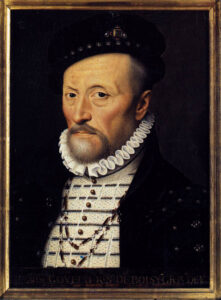
In 1546, Claude Gouffier was appointed to the prestigious position of Grand Esquire of France. This was a great privilege, as he was responsible for wearing the King’s insignia during official ceremonies and managing the royal stables.
Claude Gouffier was also one of the greatest collectors and art lovers of his time, bringing together in his personal collection paintings by great masters such as Perugino and Raphael, some of which are now in the Louvre.
A lover of the arts, Claude Gouffier undertook a vast transformation of the château, adding mullioned windows, elegant galleries and formal gardens… transforming the modest medieval dwelling into a splendid Renaissance-style edifice.
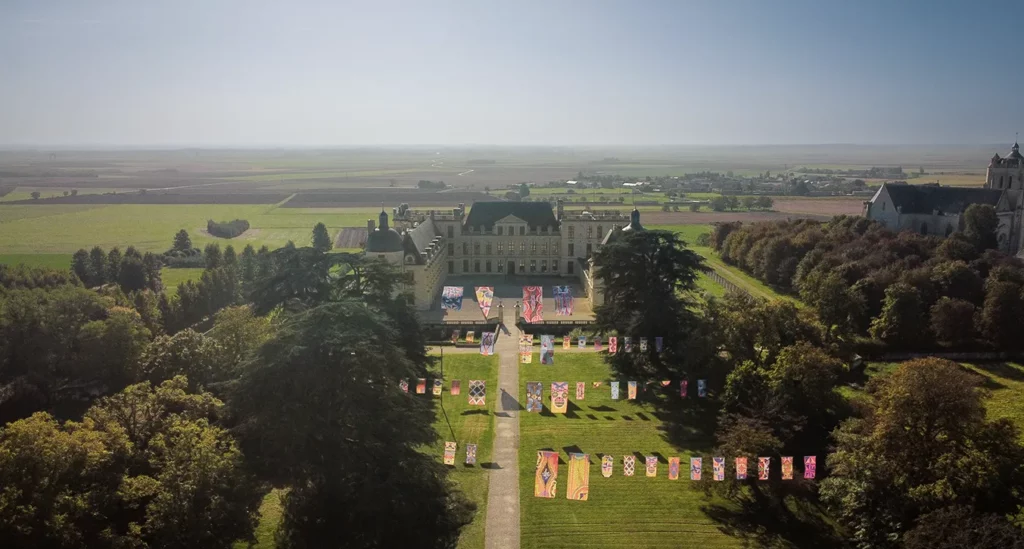
The Great Squire Gallery
One of Claude Gouffier’s most important works – and one of the highlights of any visit to Oiron castle today – is the Great Squire Gallery or Painting gallery, built between 1546 and 1549. At 55 metres long, this gallery is in the style of the Ecole de Fontainebleau and remains one of the largest in France. Its mural decoration, which illustrates the ancient text of the story of Troy, is the most important of the Renaissance after that of the François I gallery, completed in 1540 in Fontainebleau.

From Gouffier to Madame de Montespan
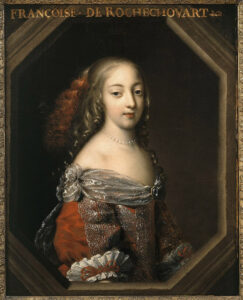
The 17th century saw the decline of the Gouffier family when Louis, Claude’s grandson, opposed Richelieu, who forced him into exile in Oiron. In 1700, Madame de Montespan, the former mistress of Louis XIV, was removed from the Court and left Versailles to take refuge in the Deux-Sèvres. She acquired the château in the name of her son, the Duc d’Antin, and completed the work with the construction of the Tour des Ondes, named after her family motto : “Before the sea was in the world, Rochechouart wore waves”.
Over the centuries, Château d’Oiron passed from hand to hand. Neglected by its owners, Oiron sank into oblivion.
The rebirth of Château d’Oiron
It wasn’t until 1840 that people began to take a renewed interest in this precious jewel, which was crying out to be maintained and preserved. In 1923, the château was listed as a historic monument and was bought by the State in 1941. In the 1980s, a vast restoration programme was launched to restore Oiron to its former glory. At the same time, it became a place of artistic expression, housing a collection of contemporary art designed specifically for the château.
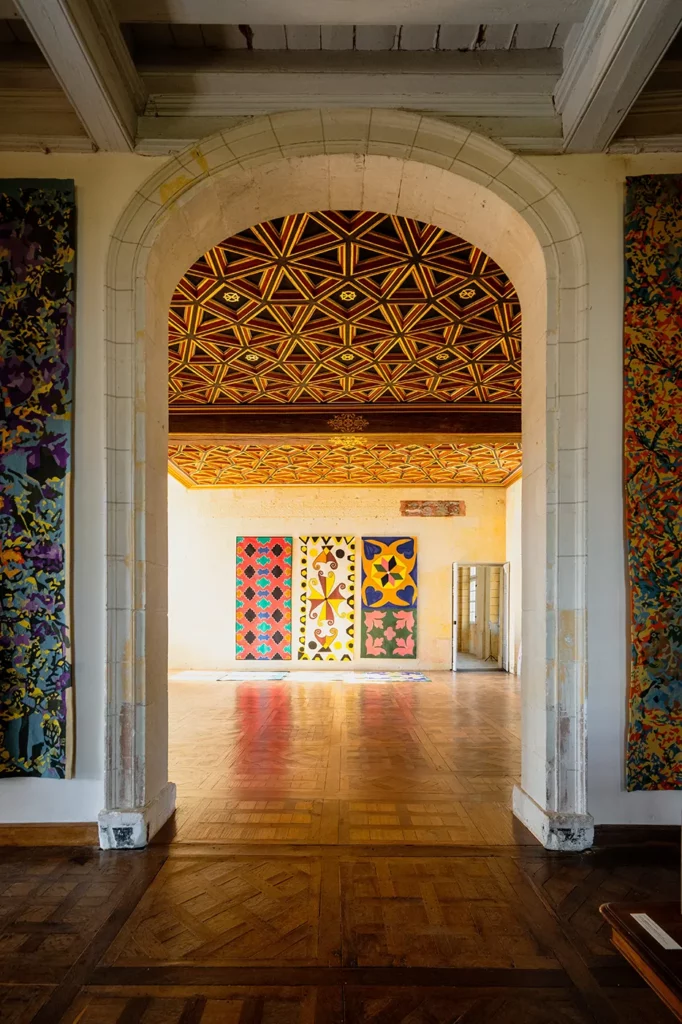
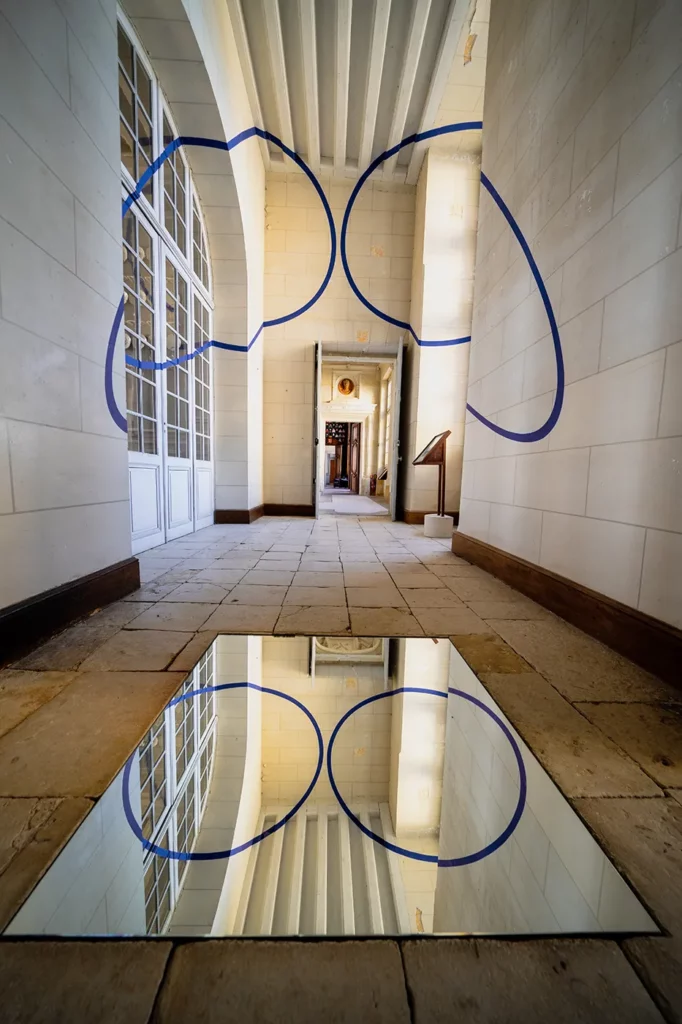
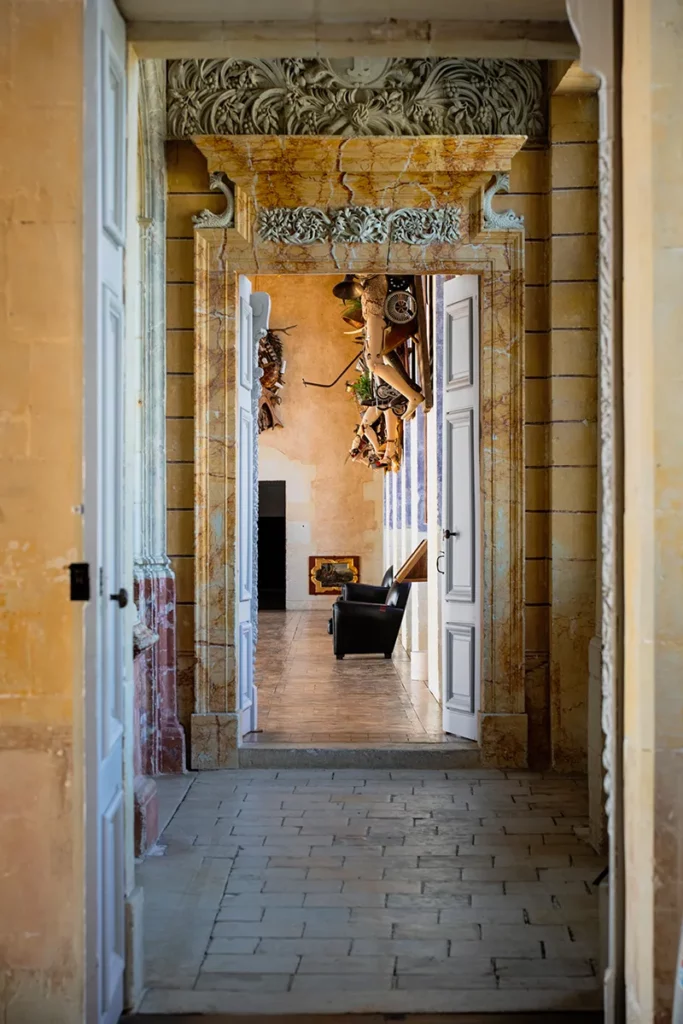
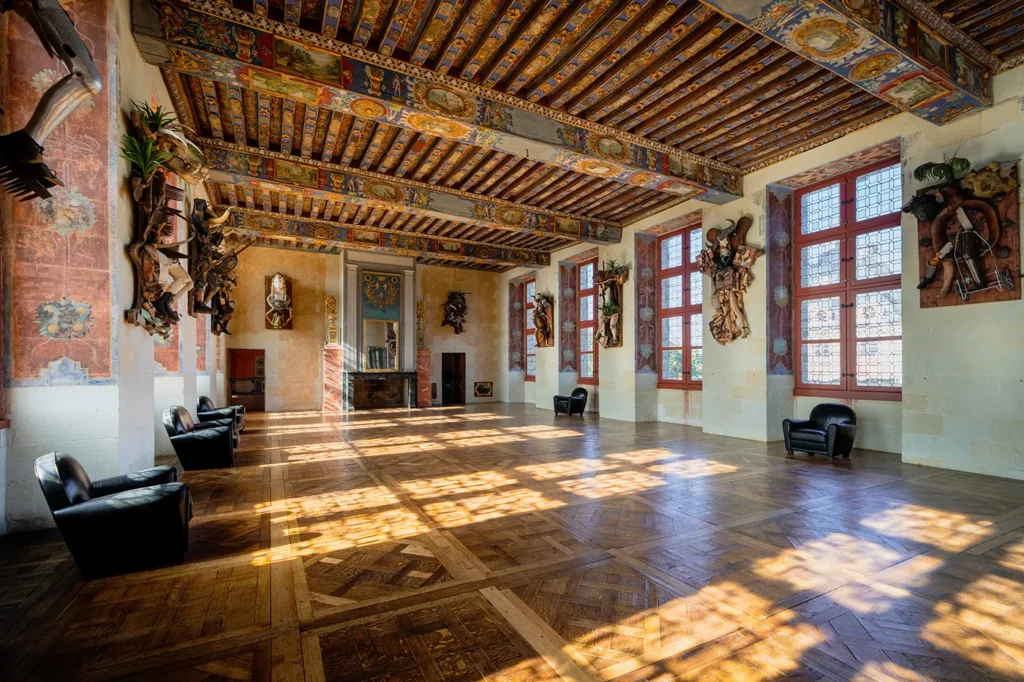
Contemporary art, a new look at a historic site
With its architecture, its gallery of paintings and its majestic ceilings, the Château d’Oiron is already a work of art in its own right. Today, visitors can wander through the castle’s many rooms and take a fresh look at this ancient art, thanks to the contemporary artists who have come to reenchant the place in their own way.
30 years of contemporary art
The contemporary art collection at Château d’Oiron celebrates its 30th anniversary this year! Nowadays, it’s not unusual to see contemporary art in historic buildings, but in 1993 it was a very avant-garde project.
Known as “Curios & Mirabilia”, the collection assembled by Jean-Hubert Martin is the largest experiment in France to integrate contemporary creation into an ancient heritage site.
Today, visitors come to Oiron as much to see the château as to discover the works of art. This success has encouraged the monument to offer temporary exhibitions several times a year to complement the permanent exhibition.
At the entrance, for example, we find the first work by Christian Boltanski, who sought to involve the villagers of Oiron. In a departure from the tradition of portrait galleries, Boltanski produced portraits of Oiron schoolchildren, photographed between 1993 and 2000.

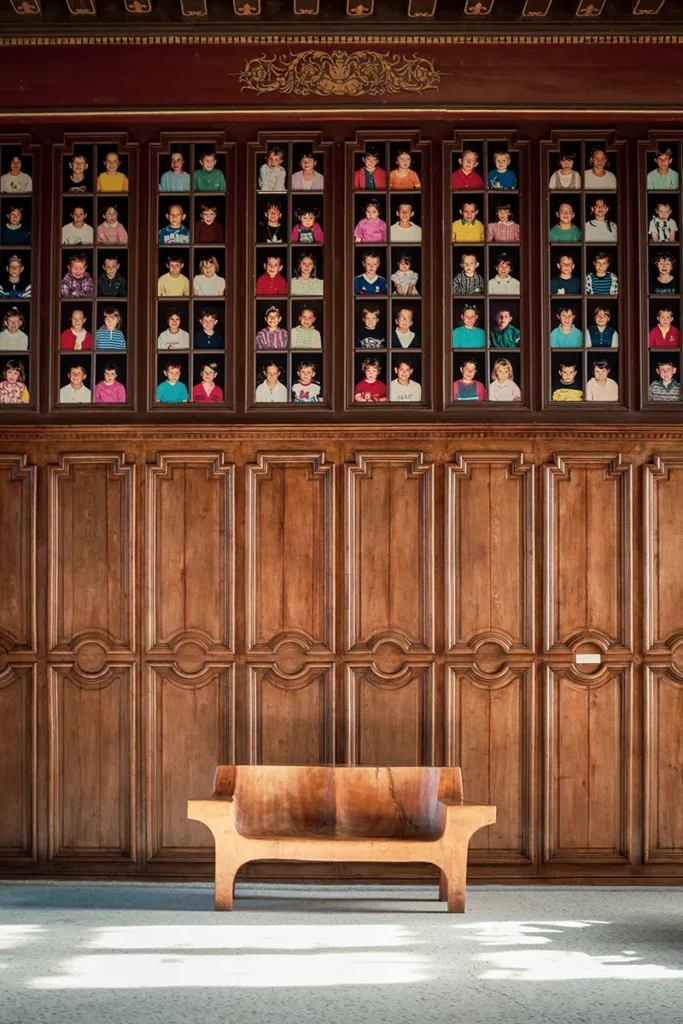
In 1993, Raoul Marek reproduced the profiles of 150 Oironnais on plates made from Sèvre porcelain. The 150 residents were also given a glass engraved with their initials, a plate bearing their likeness and a napkin representing the lines of their hand. Every 30 June, they are invited to the château for a dinner with this table service. This work obviously questions the relationship with the passage of time, as the number of guests diminishes from year to year. Once all the people represented have disappeared, the work will not be taken down again.
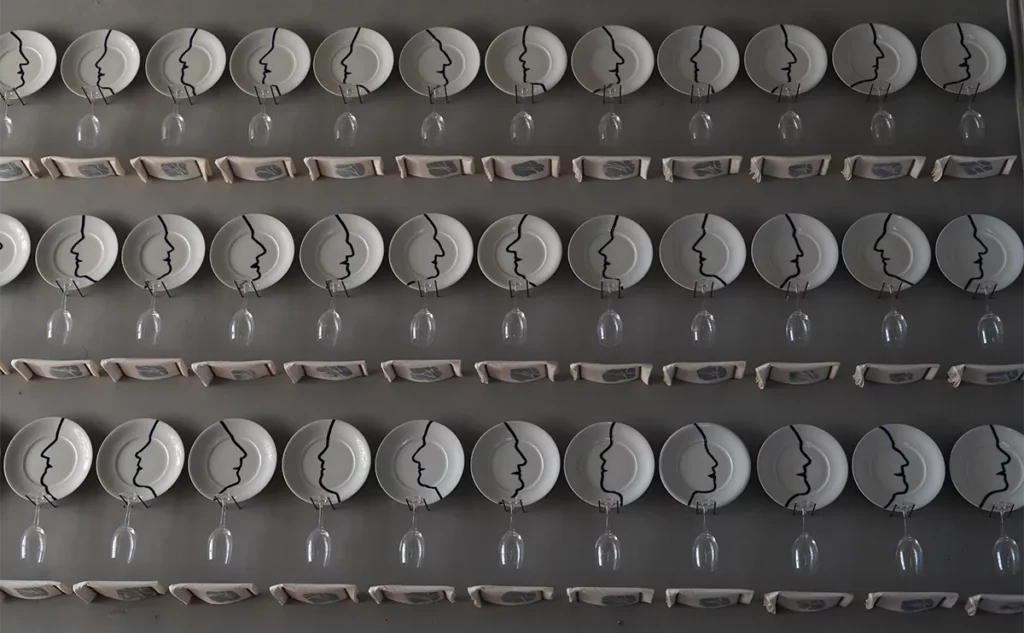
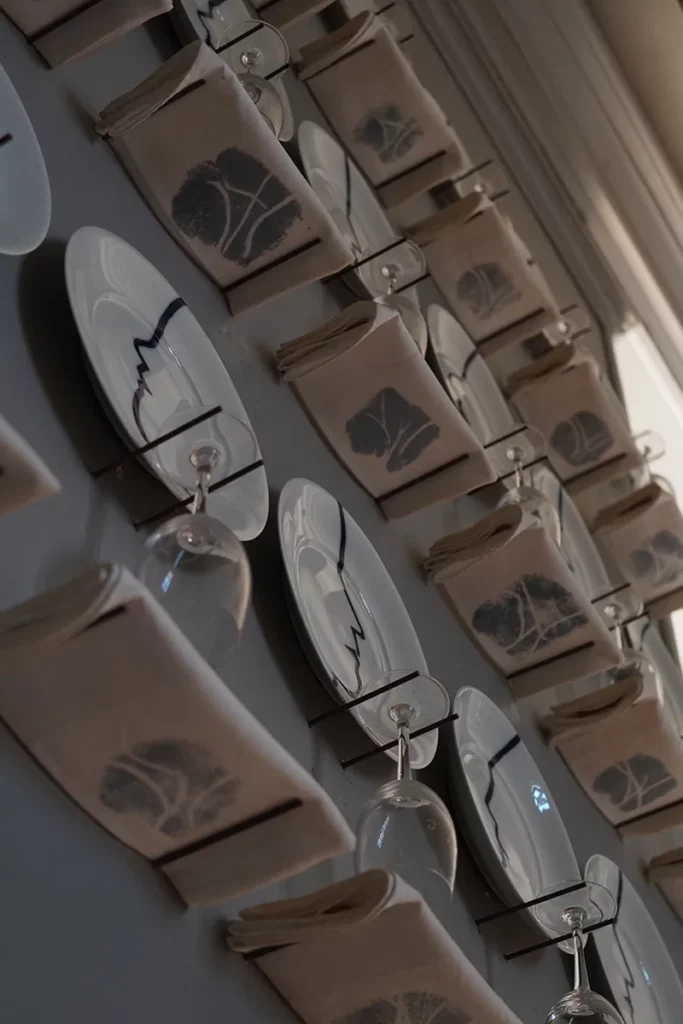
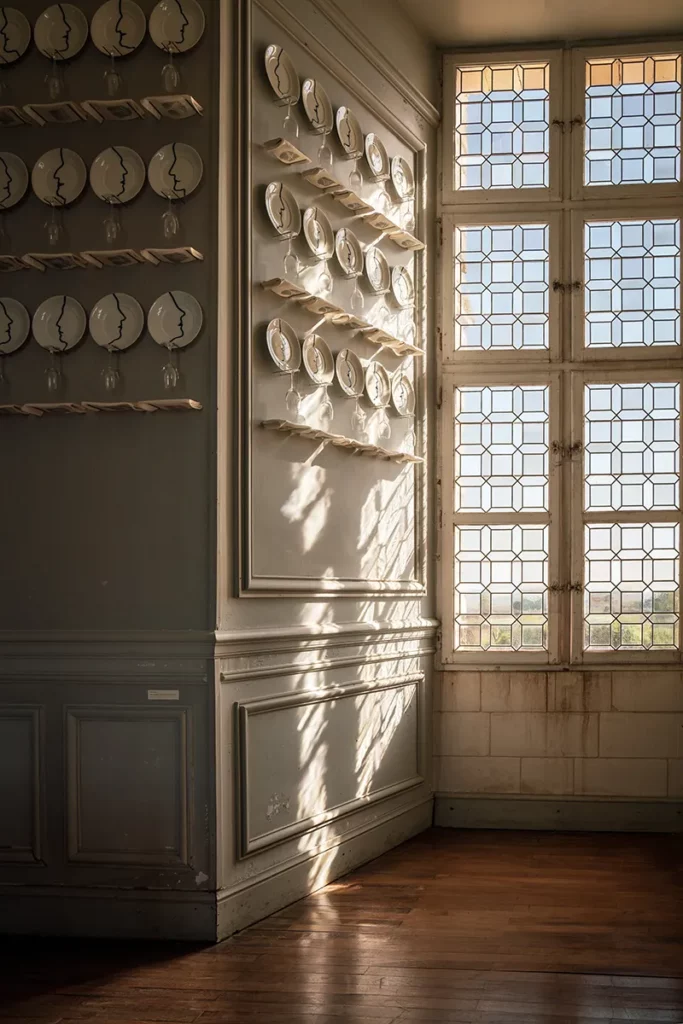
In another brightly lit room, Ian Hamilton Finlay ‘s work entitled “The Battle of Midway” refers to the 28 photographs framed on the walls. The artist combines 2 screen-printed drawings, 7 white rosebushes and 7 oval beehives, all accompanied by a background sound that sows doubt in the minds of visitors: does this sound represent the buzzing of bees flying around their hive or that of the bombers of this famous naval battle?
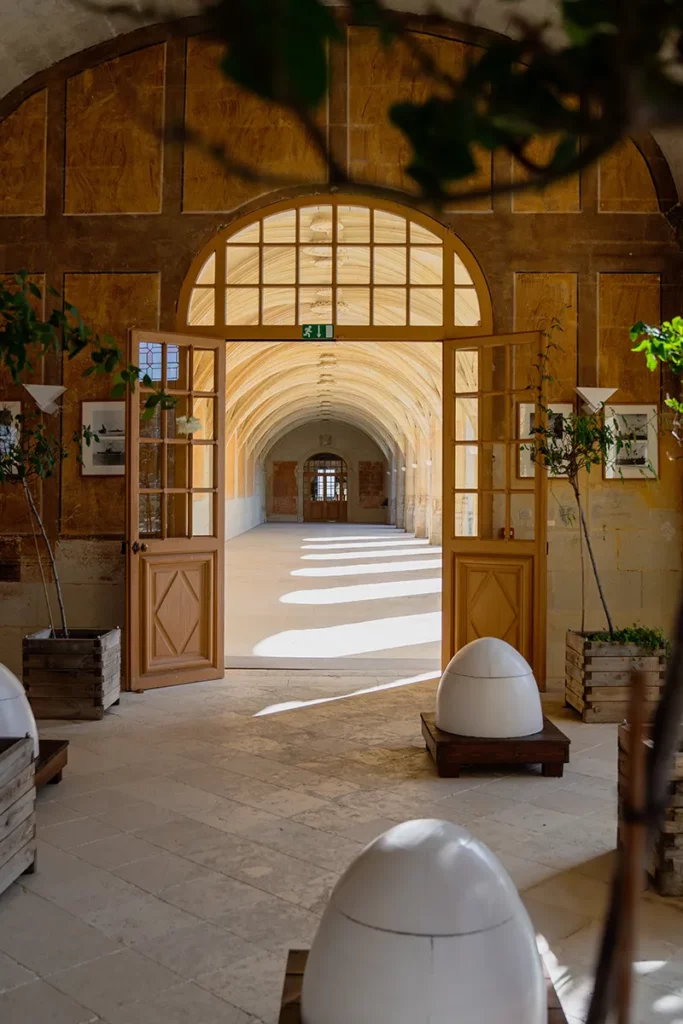
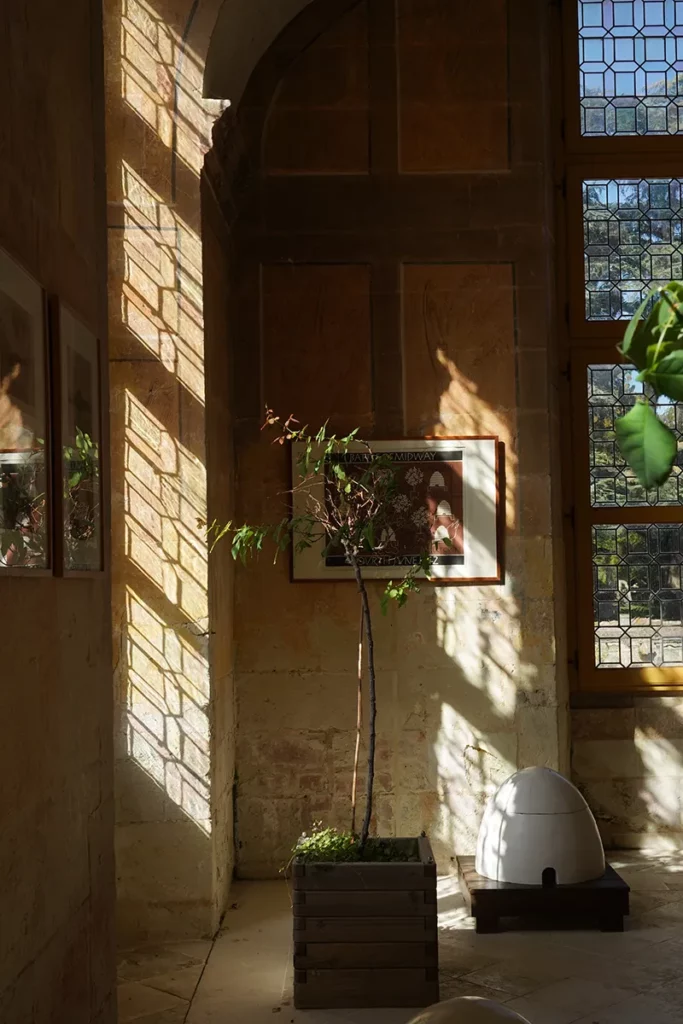
Bill Culbert‘s ‘Small Glass Pouring Light’ transforms a former servants’ quarters into a Light Bulb Room: 25 glasses of red wine appear to be arranged haphazardly on a table. The artist appeals to visitors’ senses of smell (the smell of red wine) and sight, as they discover that the shadows of the glasses take the shape of the light bulbs that illuminate them.
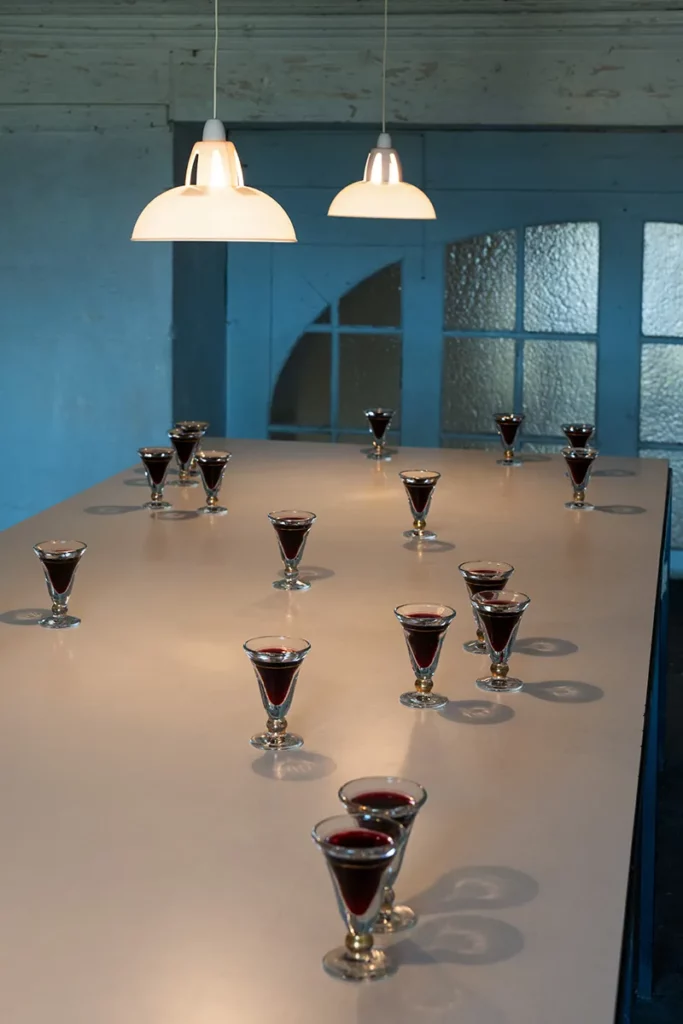
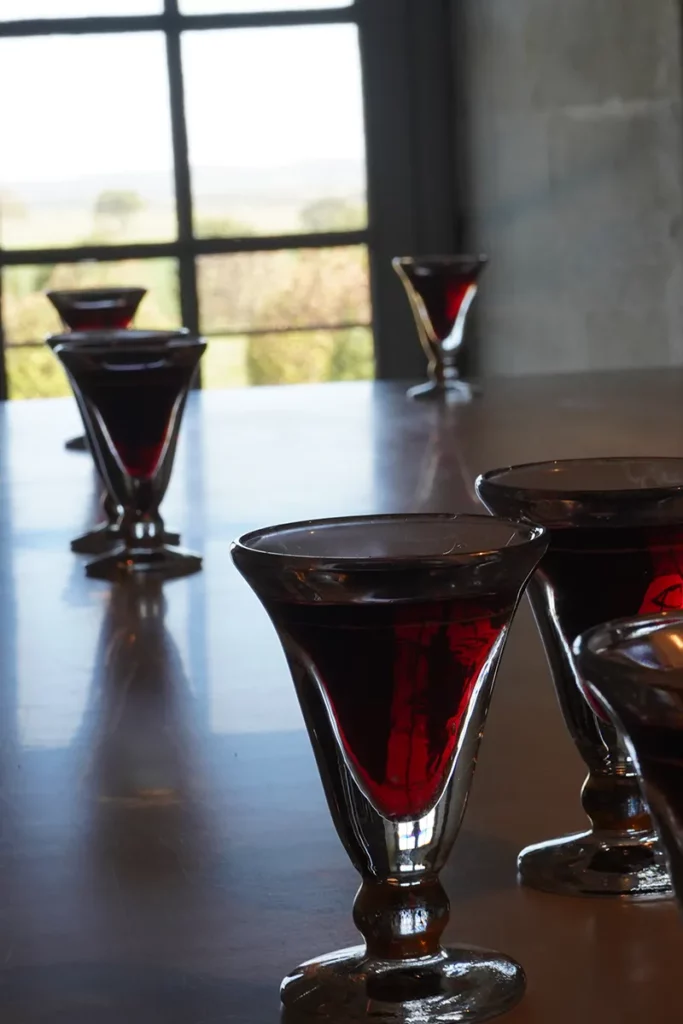

Tip!

Admission to the château is free with the Passion Monuments card, which gives you unlimited access to around a hundred monuments throughout France.
A rich programme of temporary exhibitions
The few creations mentioned are among the works of the 68 artists in the permanent collection. The museum also hosts temporary exhibitions several times a year. The most recent of these is Matrimoine, an exhibition initiated by artist Laurent-Marie Joubert, which gives a voice to artists from South Africa. They have been invited to take over the premises on the theme of cultural dialogue. The exhibition closes on 22 October.
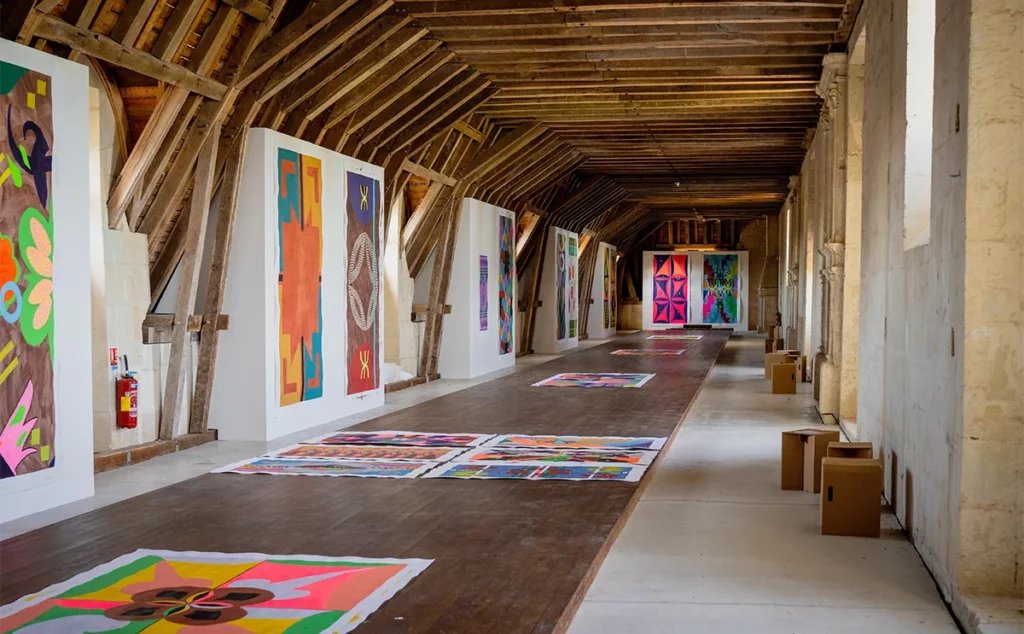
Photo gallery: visit to Château d’Oiron

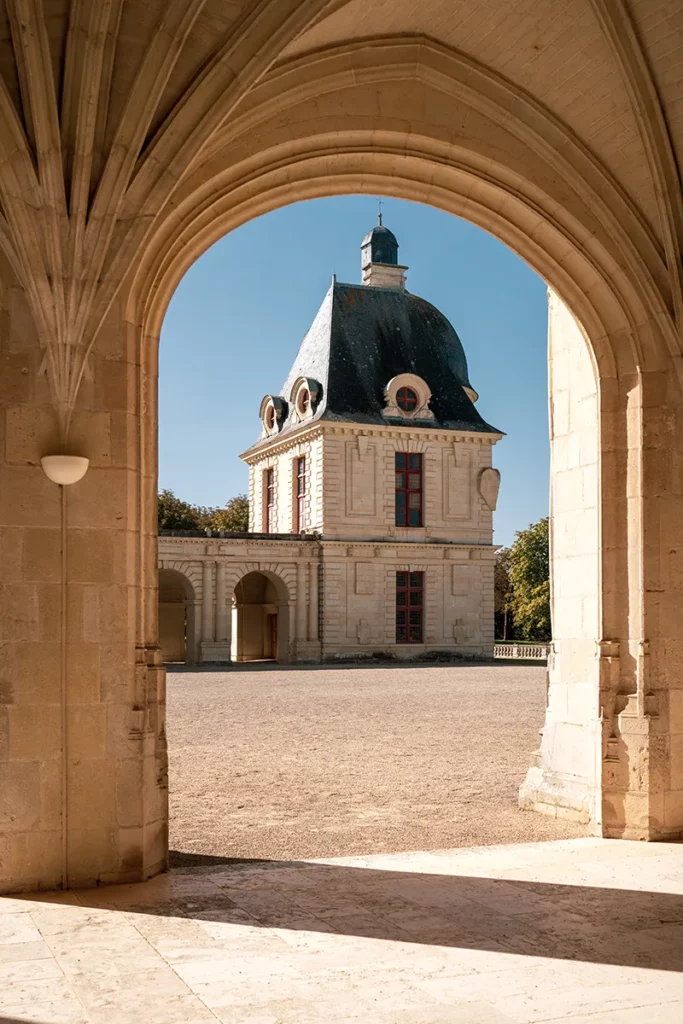
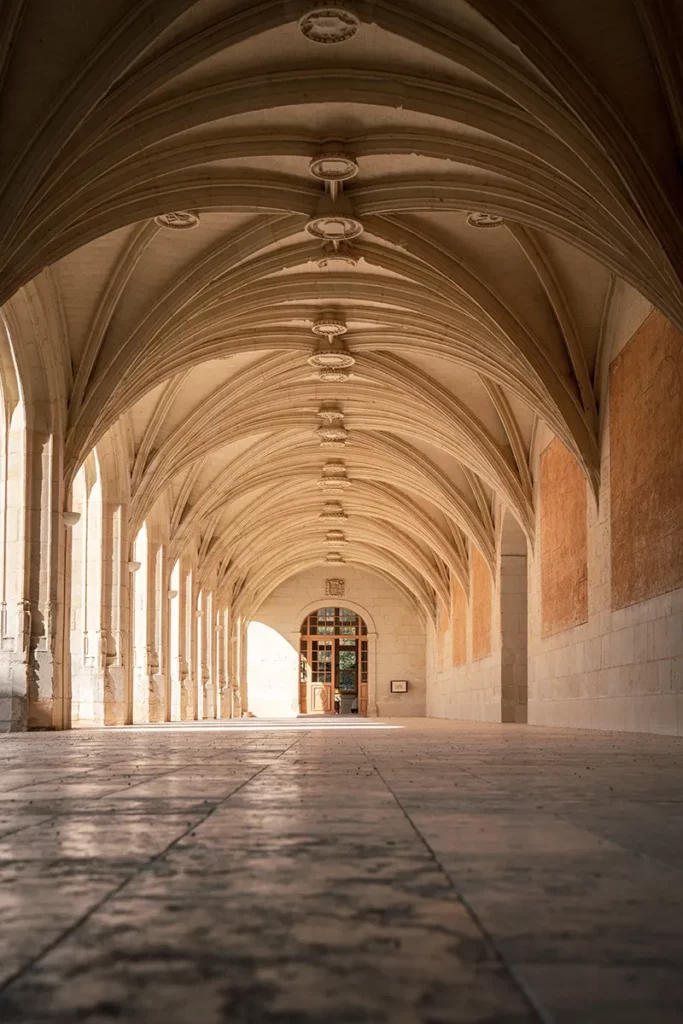

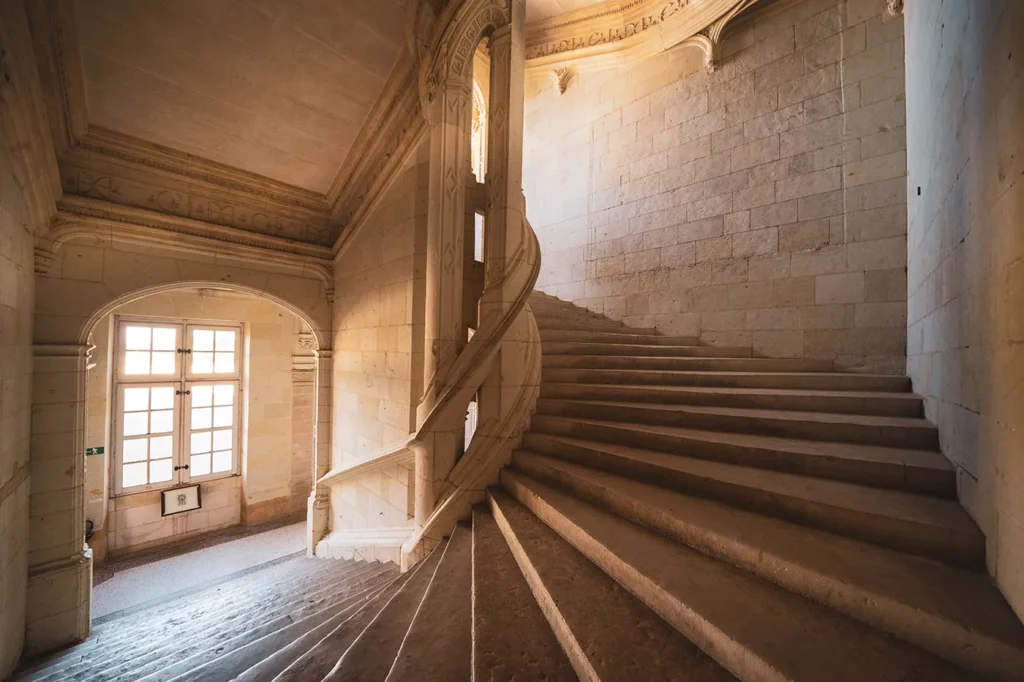
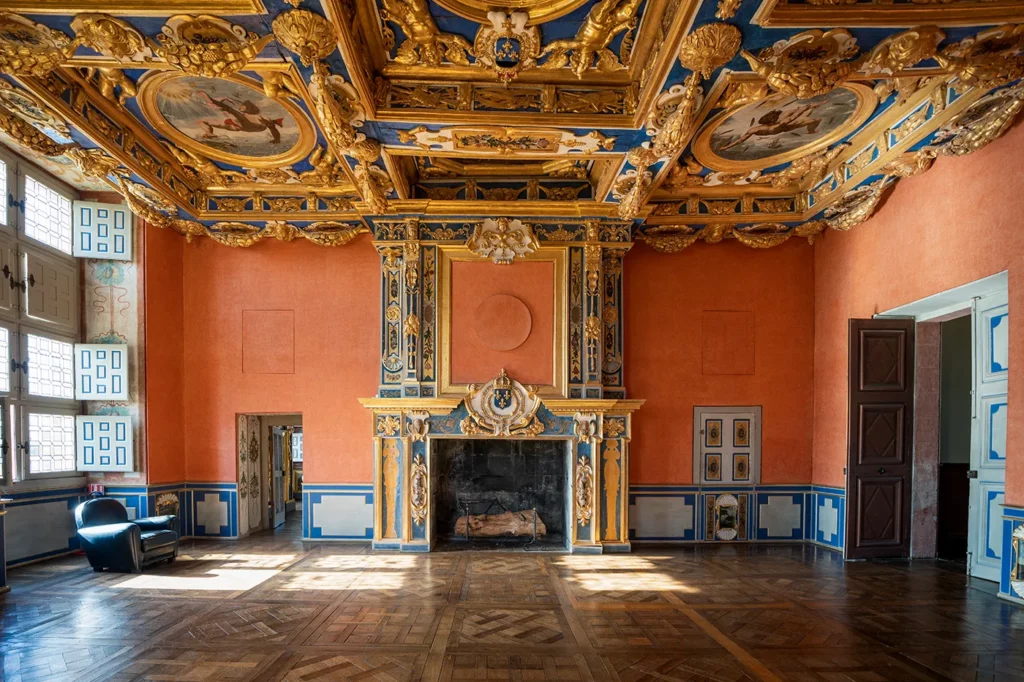
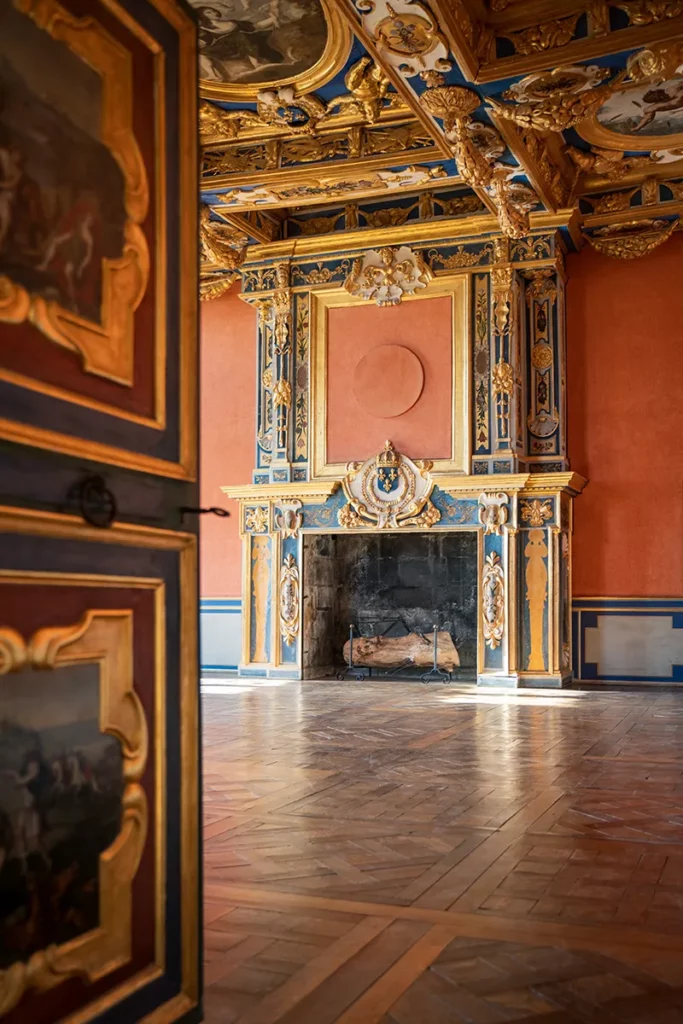
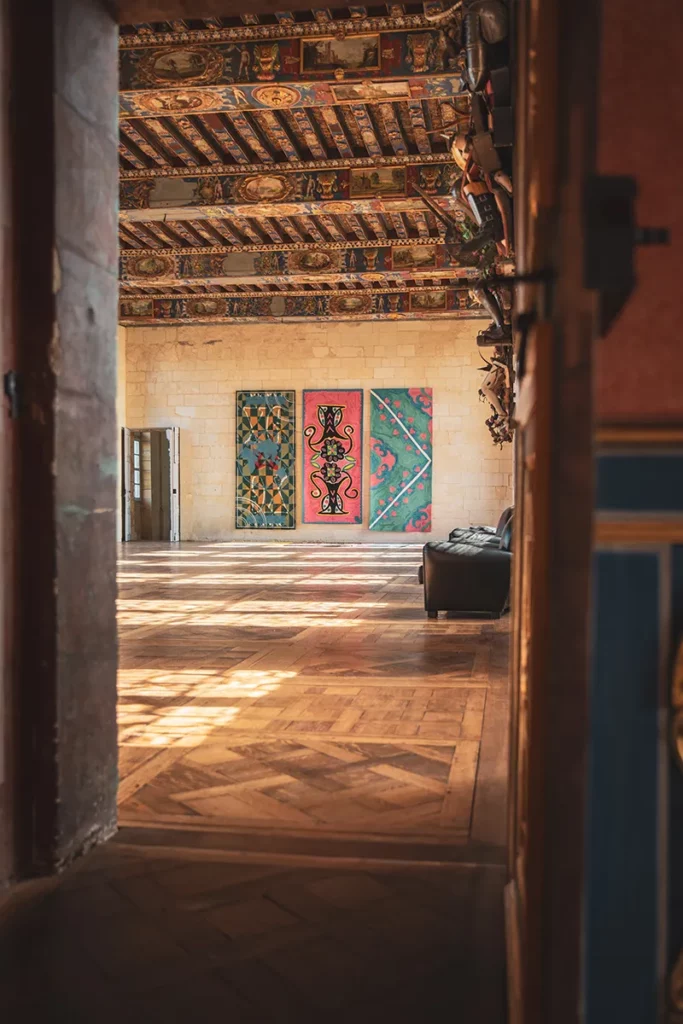
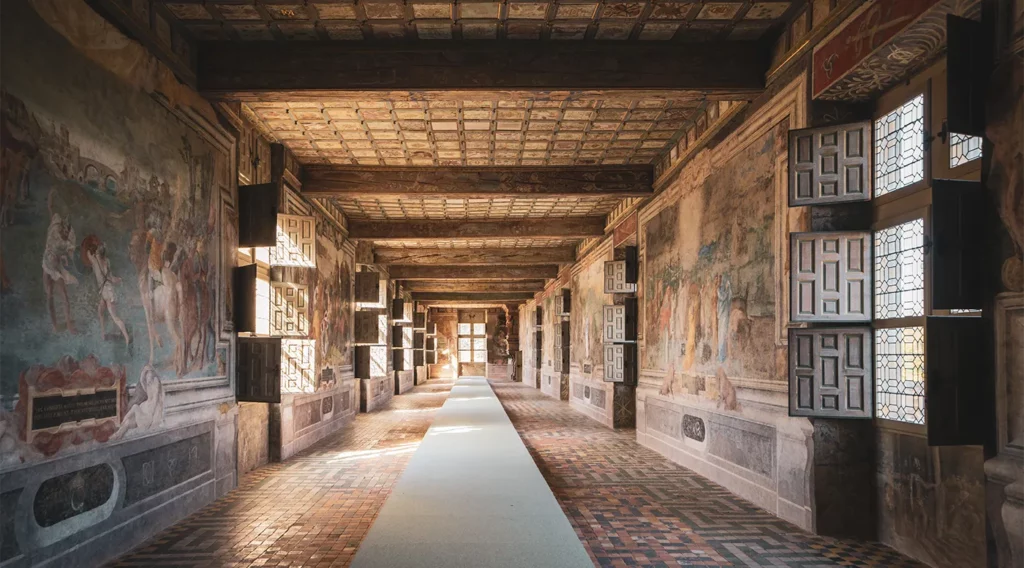
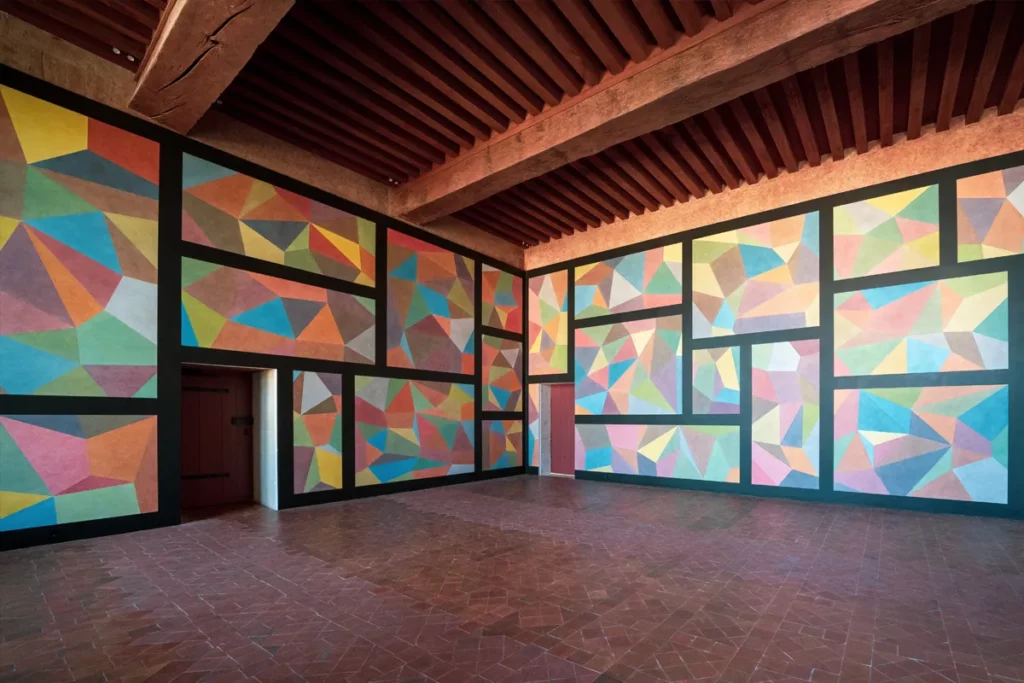
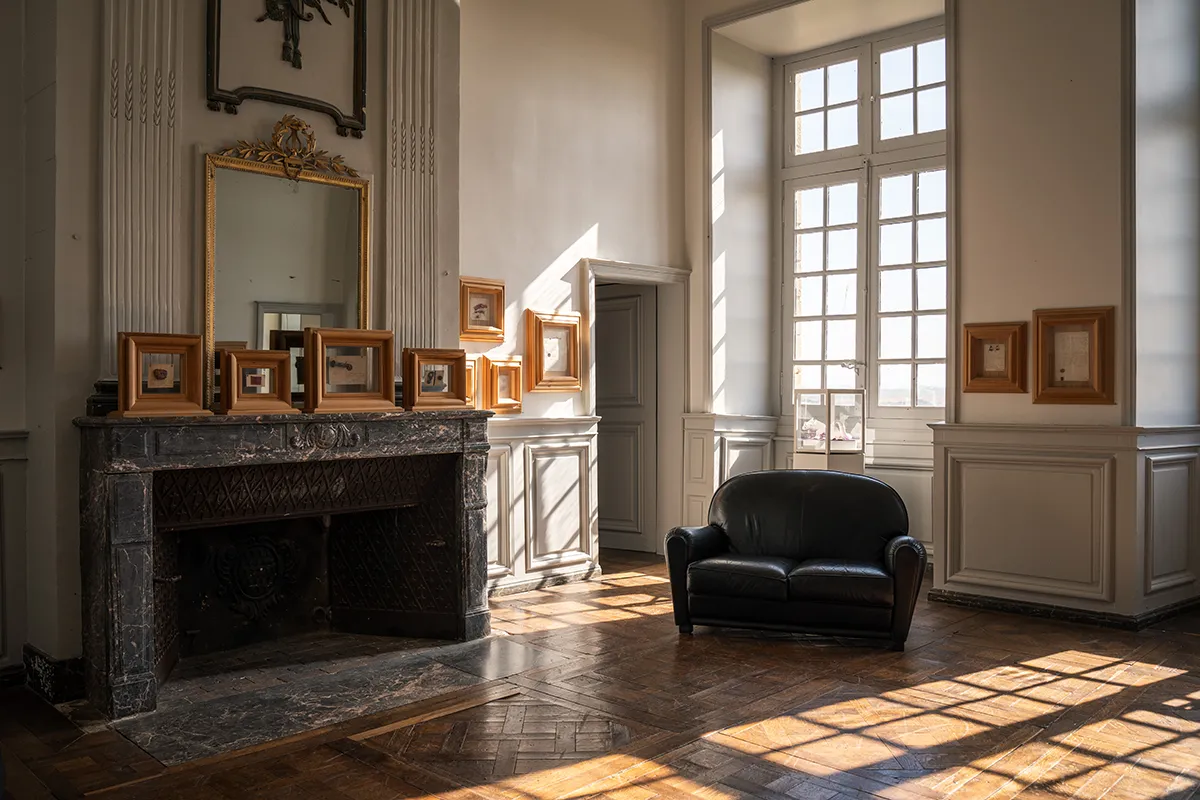
Look up!
Several rooms in the château are adorned with magnificent ceilings. From the gilded ceiling of the King’s bedroom to the 1,600 caissons that adorn the Galerie des Peintures, don’t forget to look up during your visit to admire these marvels!
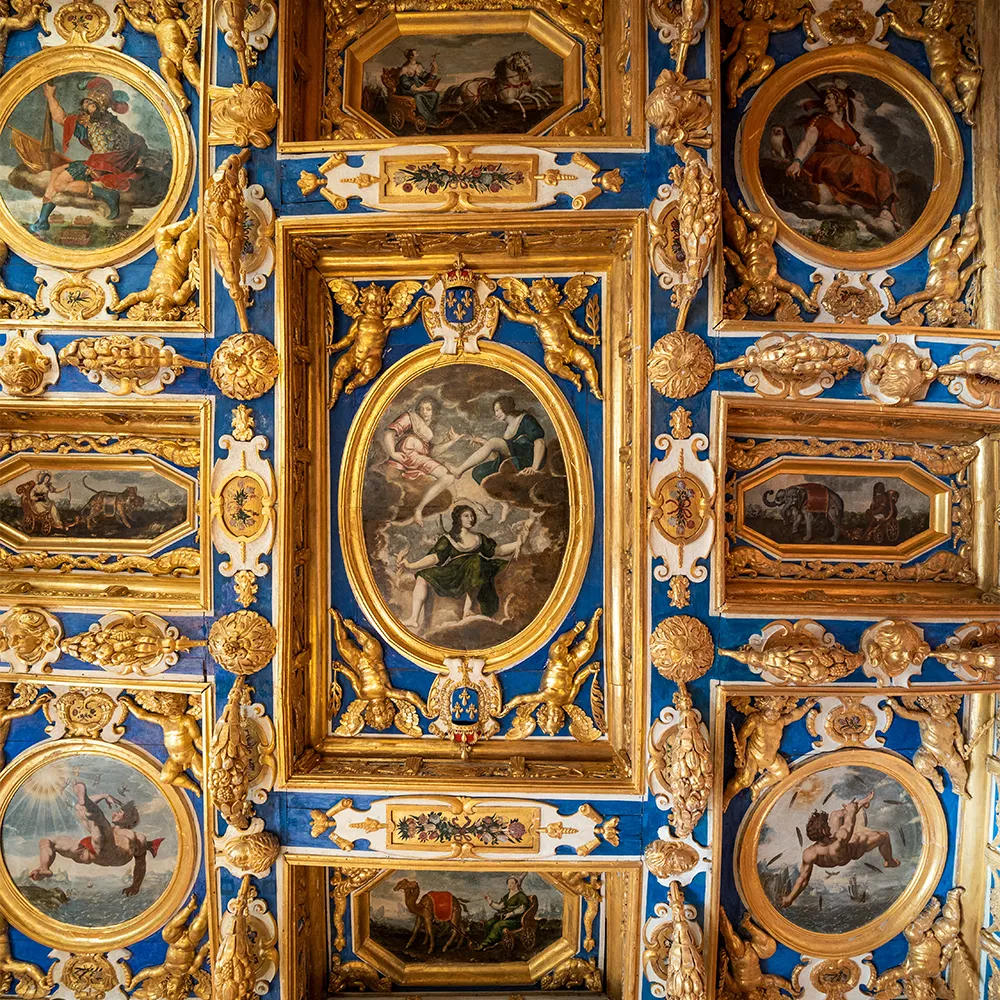
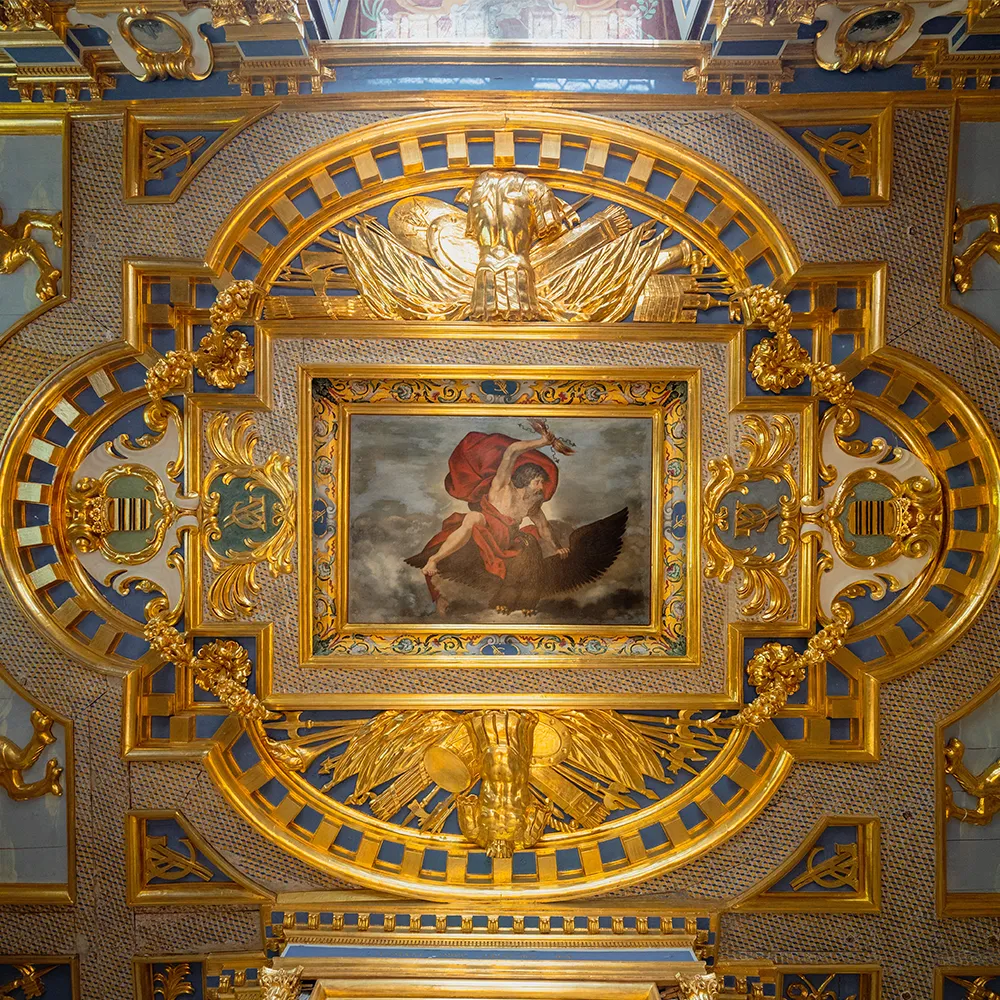
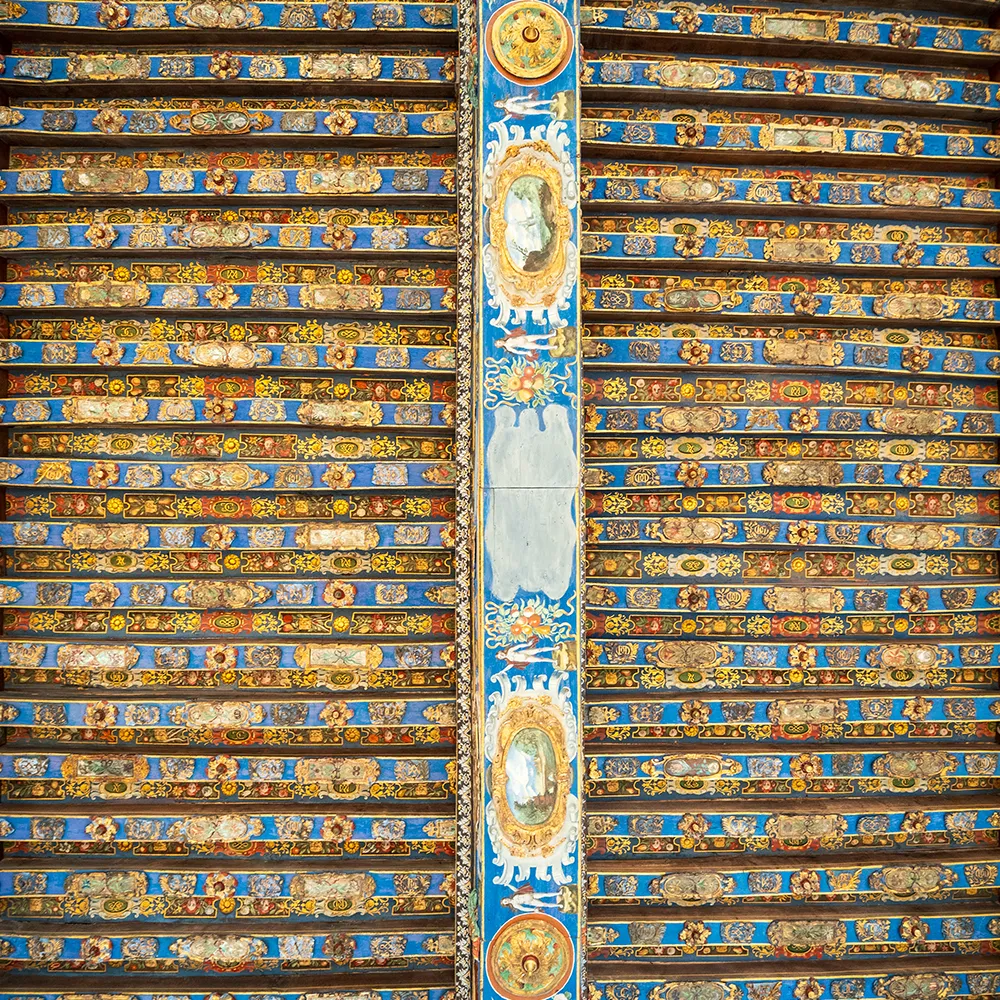
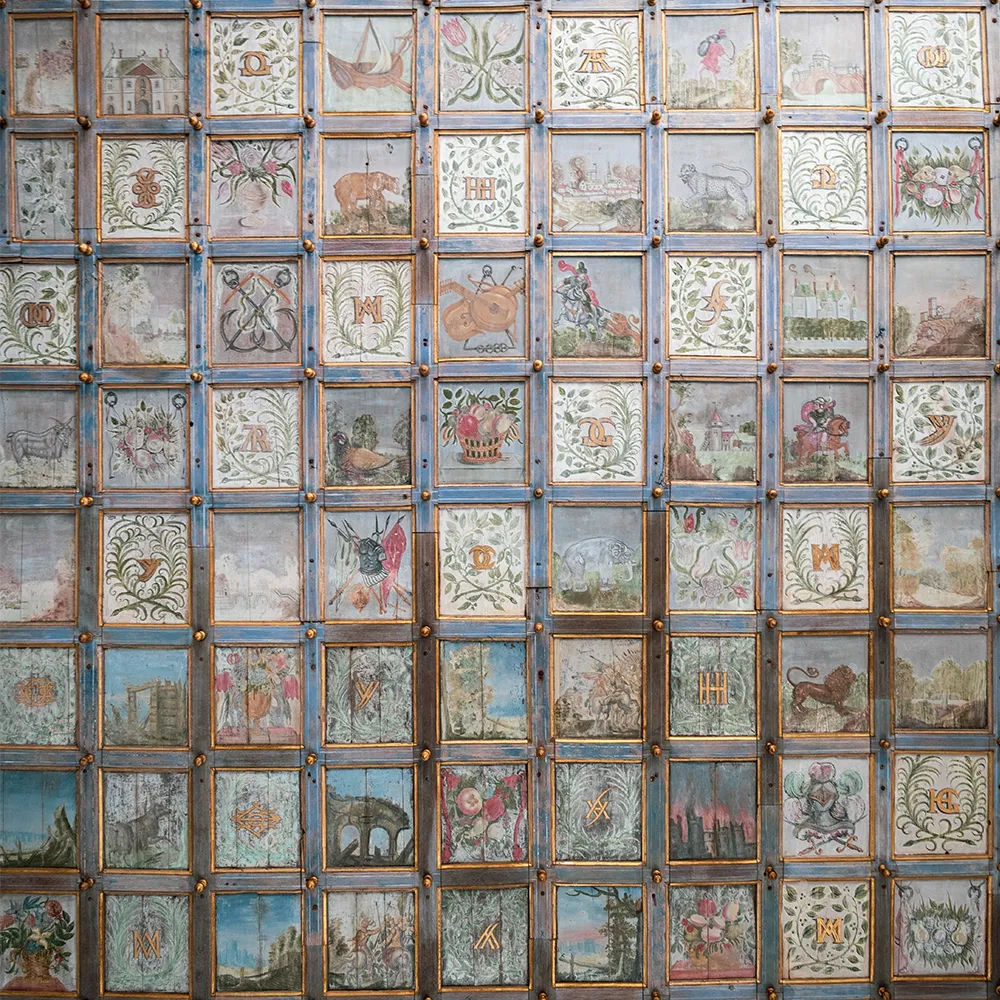
Around Oiron: the contemporary route
If you’re a fan of contemporary art, Oiron castle is part of the “Contemporary Route”, which promotes artistic creation in the heart of the historic Loire region.
On presentation of your full-price ticket, you can benefit from a reduced rate at the Abbaye Royale de Fontevraud, the Rivau Castle and the CCCOD in Tours.
How to visit Oiron castle? Useful informations
Address :
Château d’Oiron
10 Rue du Château
79100 Plaine-et-Vallées (France)
Opening times:
From 1 June to 30 September: daily from 10.30 am to 6.30 pm
1 October to 31 May: daily from 10.30am to 5.30pm
Website:
https://www.chateau-oiron.fr
Prices :
Single ticket €8
Free for under-26s, disabled people and their carers, jobseekers, holders of the education pass and on the first Sunday in January, February, March and November.
The artworks presented at the Oiron castle are part of the Cnap collection.
This article was produced in collaboration with the Centre des monuments nationaux. Many thanks to the team at Oiron castle and especially to Samuel for his warm welcome.
Unless otherwise stated, all photographs in this article are the property of Culturez-vous and may not be used without written permission.

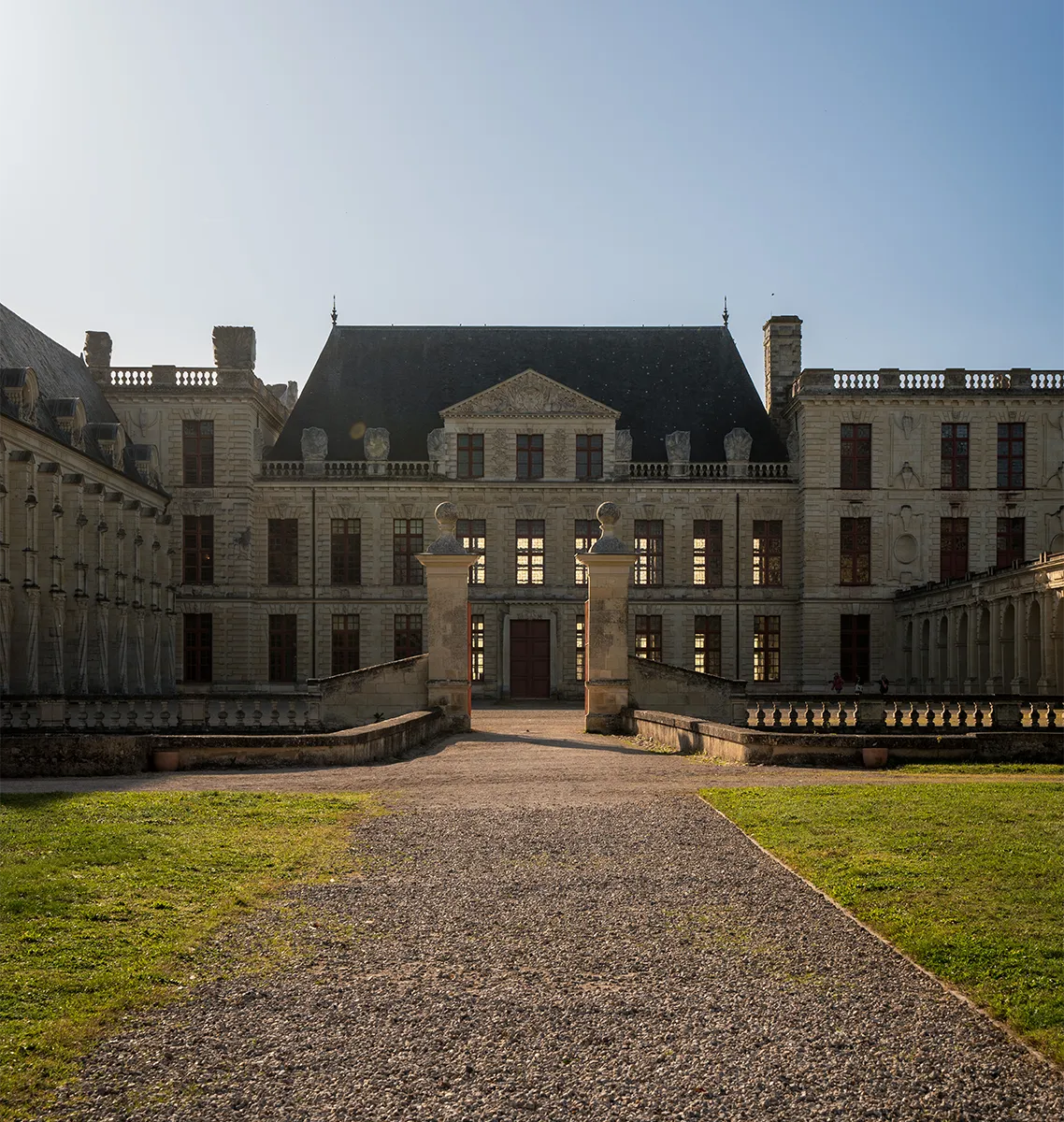



No Comments
Leave a comment Cancel